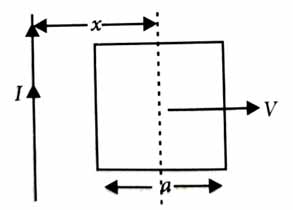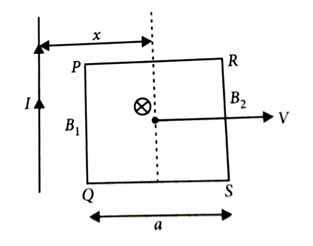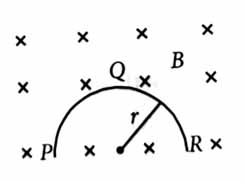Topic Question Set
Q 1
:
A cycle wheel of radius 0.5 m is rotated with constant angular velocity of 10 rad/s in a region of magnetic field of 0.1 T which is perpendicular to the plane of the wheel. The EMF generated between its centre and the rim is [2019]
0.25 V
0.125 V
0.5 V
zero
(2)
Here,
So, the emf generated between its centre and rim is,
Q 2
:
A conducting square frame of side and a long straight wire carrying current are located in the same plane as shown in the figure. The frame moves to the right with a constant velocity . The emf induced in the frame will be proportional to [2015]


(2)

Here,
Emf induced in the frame,
Q 3
:
A thin semicircular conducting ring (PQR) of radius is falling with its plane vertical in a horizontal magnetic field , as shown in the figure. The potential difference developed across the ring when its speed is , is [2014]


zero
and is at higher potential
and is at higher potential
and is at higher potential
(4)
Motional emf induced in the semicircular ring PQR is equivalent to the motional emf induced in the imaginary conductor PR.
i.e.,
Therefore, potential difference developed across the ring is with at higher potential.

